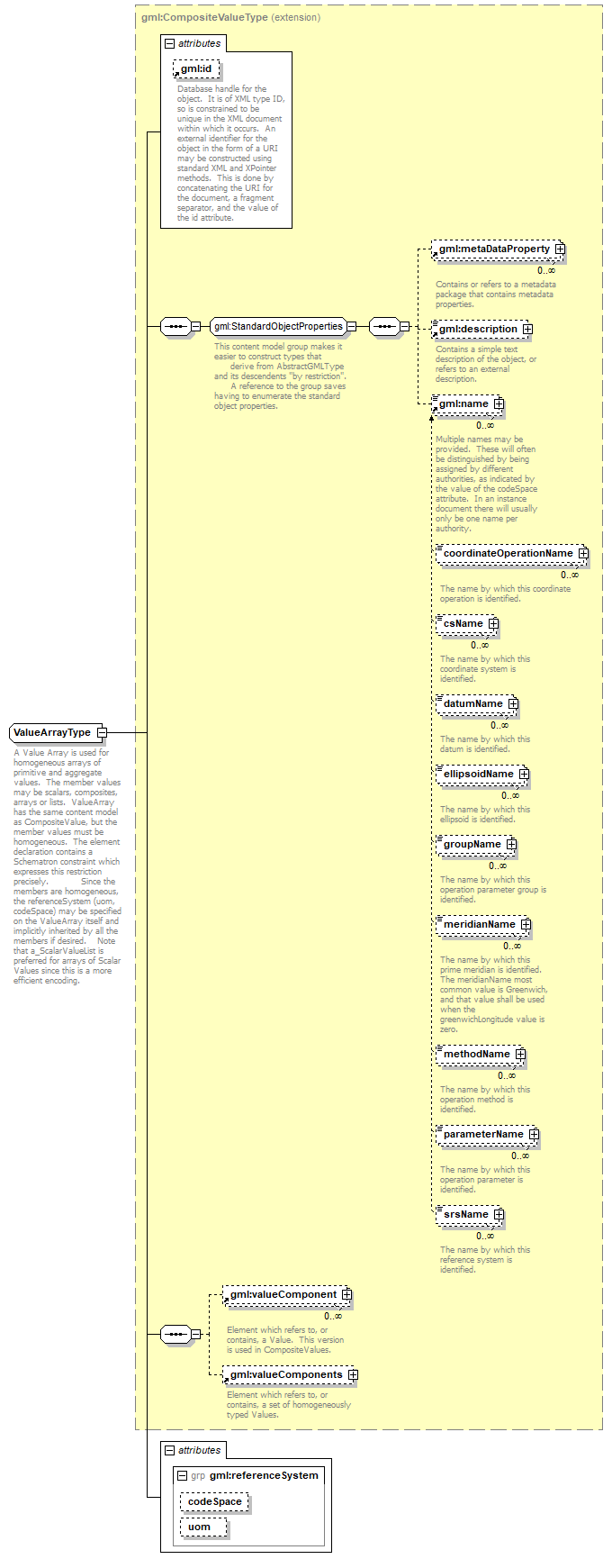| diagram |  |
||||||||||||||||||||||||||
| namespace | http://www.opengis.net/gml | ||||||||||||||||||||||||||
| type | extension of gml:CompositeValueType | ||||||||||||||||||||||||||
| properties |
|
||||||||||||||||||||||||||
| children | gml:metaDataProperty gml:description gml:name gml:valueComponent gml:valueComponents | ||||||||||||||||||||||||||
| used by |
|
||||||||||||||||||||||||||
| attributes |
|
||||||||||||||||||||||||||
| annotation |
|
||||||||||||||||||||||||||
| source | <xs:complexType name="ValueArrayType"> <xs:annotation> <xs:documentation>A Value Array is used for homogeneous arrays of primitive and aggregate values. The member values may be scalars, composites, arrays or lists. ValueArray has the same content model as CompositeValue, but the member values must be homogeneous. The element declaration contains a Schematron constraint which expresses this restriction precisely. Since the members are homogeneous, the referenceSystem (uom, codeSpace) may be specified on the ValueArray itself and implicitly inherited by all the members if desired. Note that a_ScalarValueList is preferred for arrays of Scalar Values since this is a more efficient encoding.</xs:documentation> </xs:annotation> <xs:complexContent> <xs:extension base="gml:CompositeValueType"> <xs:attributeGroup ref="gml:referenceSystem"/> </xs:extension> </xs:complexContent> </xs:complexType> |
XML Schema documentation generated by XMLSpy Schema Editor http://www.altova.com/xmlspy